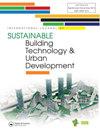中国的空间增长和城市密度——趋势及其对经济和能源效率的影响
Q4 Engineering
International Journal of Sustainable Building Technology and Urban Development
Pub Date : 2014-06-18
DOI:10.1080/2093761X.2014.908813
引用次数: 4
摘要
中国城市的平均人口密度徘徊在5000人/平方公里的门槛附近,拥有高密度拥挤的核心和巨大的郊区扩张,在过去的20年里,郊区面积每10年增加1.8倍。如果目前的趋势继续下去,到2030年,中国郊区的人口密度将达到2500人/平方公里左右,以上海为例,郊区的面积将是核心面积的36倍。这将明显导致交通运输的能源需求增加两倍,并有助于增加人均基础设施成本。中国迫切需要雄心勃勃地向填充式城市发展转变,以避免当前的边缘和跨越式增长趋势,这种趋势助长了去密度化和城市扩张。国家和地方政策必须促进和促进紧凑的城市发展和高水平的铰接式密度:高居住密度、高工作密度、社区规模混合使用和高密度的城市便利设施,以改善可达性。本文章由计算机程序翻译,如有差异,请以英文原文为准。
Spatial growth and urban densities in China - trends and impacts on economic and energy efficiency
Chinese cities are hovering in their average density close to the threshold of 5000 inhabitant/km2, with highly dense congested cores and a vast suburban expansion where the suburban area has been multiplied by 1.8 every 10 years for the last 2 decades. If the present trends continue, Chinese suburban density will be around 2500 inhabitant/km2 in 2030, with suburbs 36 times bigger in surface than the core, as the Shanghai case exemplifies. It would notably lead to a tripling of energy demand for transportation and contribute to increasing the infrastructure costs per capita. China needs an urgent and ambitious shift toward infill urban development to avoid the current trend of edge and leapfrog growth that feeds de-densification and urban sprawl. National and local policies must promote and foster compact urban development and high levels of articulated density: high residential density, high job density, neighbourhood scale mixed use, and high density of urban amenities to improve accessibility.
求助全文
通过发布文献求助,成功后即可免费获取论文全文。
去求助
来源期刊

International Journal of Sustainable Building Technology and Urban Development
Engineering-Building and Construction
CiteScore
1.20
自引率
0.00%
发文量
0
期刊介绍:
The International Journal of Sustainable Building Technology and Urban Development is the official publication of the Sustainable Building Research Center and serves as a resource to professionals and academics within the architecture and sustainability community. The International Journal of Sustainable Building Technology and Urban Development aims to support its academic community by disseminating studies on sustainable building technology, focusing on issues related to sustainable approaches in the construction industry to reduce waste and mass consumption, integration of advanced architectural technologies and environmentalism, sustainable building maintenance, life cycle cost (LCC), social issues, education and public policies relating to urban development and architecture .
 求助内容:
求助内容: 应助结果提醒方式:
应助结果提醒方式:


